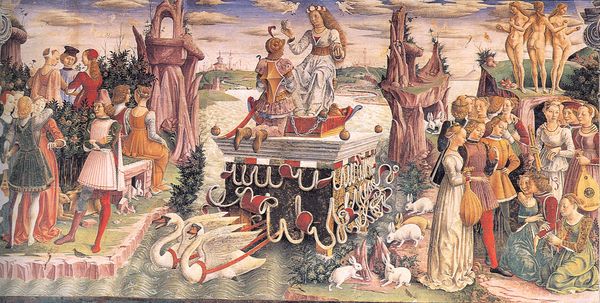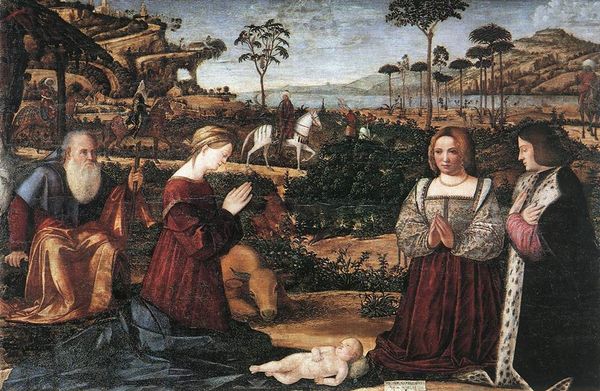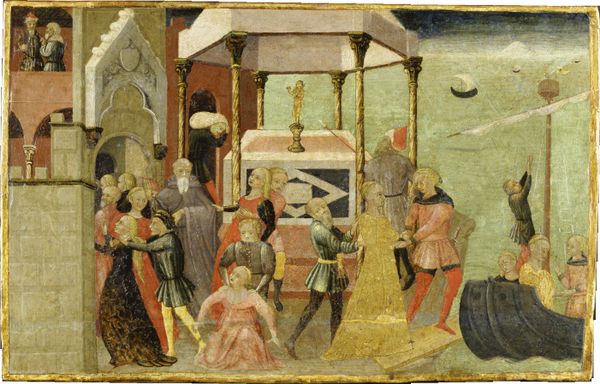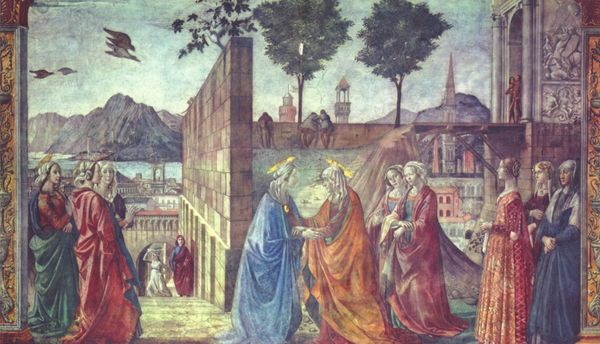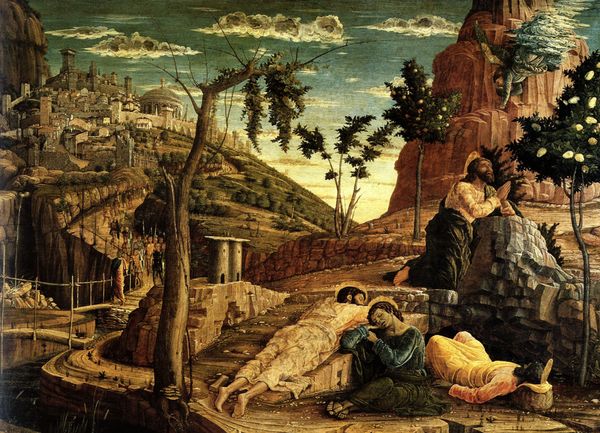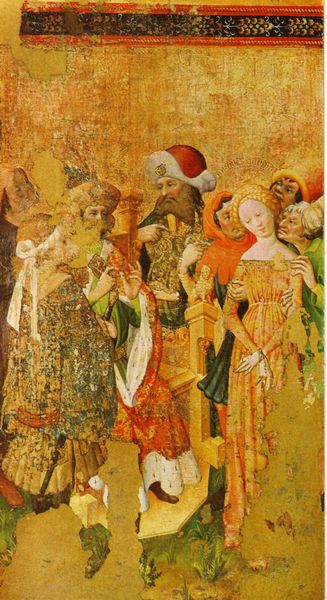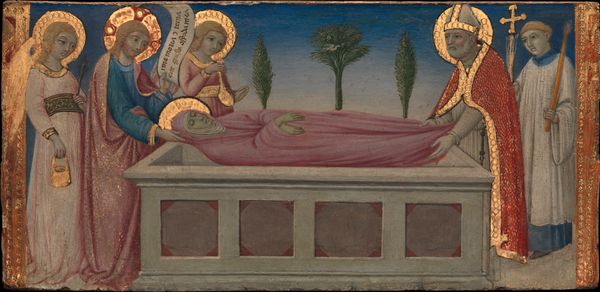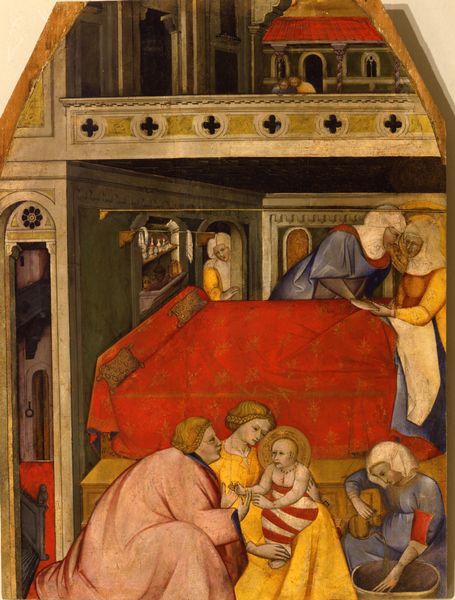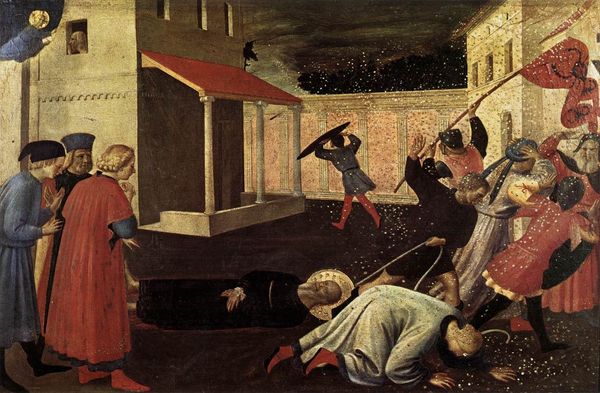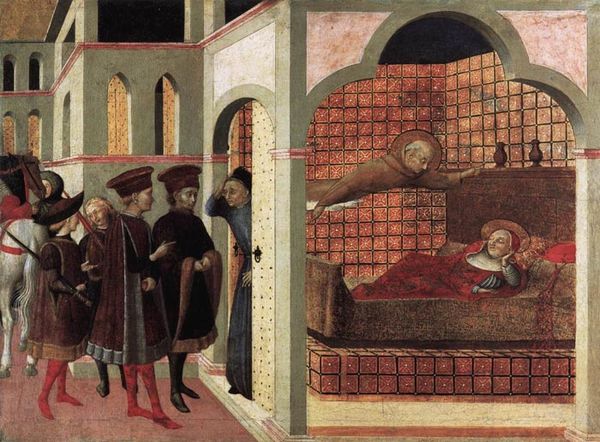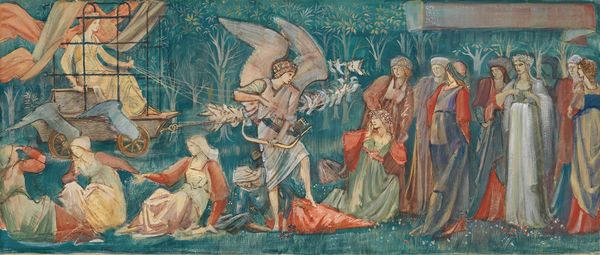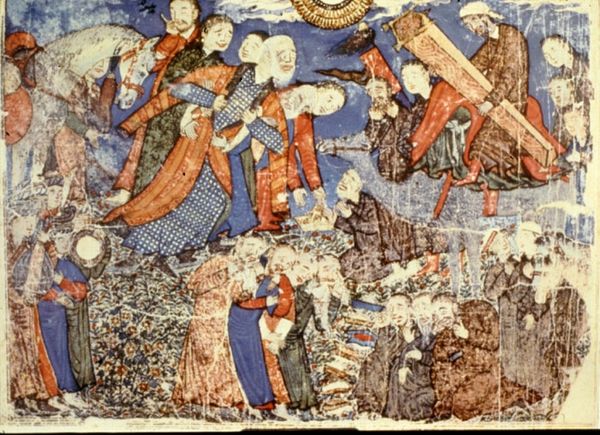
panel, tempera
#
panel
#
narrative-art
#
tempera
#
figuration
#
genre-painting
#
history-painting
#
italian-renaissance
Dimensions: Overall 17 3/4 x 45 1/2 in. (45.1 x 115.6 cm); painted surface 15 1/8 x 43 1/4 in. (38.4 x 109.9 cm)
Copyright: Public Domain
Curator: This panel painting, made with tempera around 1475 to 1485, is titled "The Legend of Cloelia". The artist behind it is Guidoccio di Giovanni Cozzarelli, and we find it today at the Metropolitan Museum of Art. Editor: Whoa. Okay, my first thought? That water looks chilly! And I'm getting a definite "historical drama" vibe, with a touch of, like, '80s fantasy movie cover thrown in for good measure. What's going on here? Curator: Well, let's unpack it. Cloelia was a Roman maiden taken hostage by Lars Porsena, an Etruscan king. The painting illustrates her escape along with other hostages, swimming across the Tiber River to return to Rome. It's a fascinating exploration of female agency in a period that often relegated women to the domestic sphere. Editor: I see that now! There’s such movement in her figure as she heads towards that strange almost cartoonish rendition of Rome. So is the story an early comment on the restrictions on female agency? Is that fair? Curator: That’s certainly a lens through which we can view it. Consider the context. It’s painted during the early Renaissance when humanist ideals were gaining momentum. The legend of Cloelia, with her bravery and patriotism, likely resonated strongly with contemporary audiences as a symbol of Roman virtue and resistance, perhaps also with simmering reflections about how Rome and larger patriarchy treated women as political pawns, but heroic when their value aligned with patriarchal needs. Editor: I love the artist's decision to show the event unfolding over time. Like, first, they’re being held in what looks like a sultan’s tent— talk about cultural anxieties represented through imagery! Then splash, they're mid-river rescue, and *finally* at the fortified city. Curator: Exactly! Cozzarelli masterfully employs a continuous narrative, allowing the viewer to witness multiple moments in the story within a single frame. It’s characteristic of early Renaissance painting. I'm especially drawn to the stark contrast between the "civilized" Roman city and the perceived "foreign" threat represented by the Etruscan camp, a potent visual representation of cultural biases during the period. Editor: This feels less divinely inspired like a lot of the art from this period and more directly inspired by the politics and history of the time it was created in. It reminds me to always look a little deeper into the context and motivations of not only the artist, but the piece itself, even now. Curator: Precisely. “The Legend of Cloelia” offers us an important glimpse into the intersection of history, gender, and artistic representation, then and now.
Comments
No comments
Be the first to comment and join the conversation on the ultimate creative platform.
